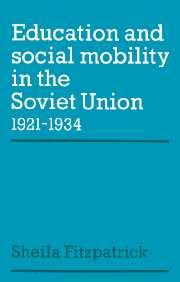2 - The new Soviet school
Published online by Cambridge University Press: 11 November 2009
Summary
From the viewpoint of Soviet Marxists, an apolitical school was neither desirable nor possible. Education was, by definition, ideological; and only hypocrites would deny this. The Soviet school must train Soviet citizens, freed from the prejudices of religion and understanding the meaning of class war, the legitimacy of the revolution and the goals of the Soviet state. There were no ‘neutral’ facts to be learned in the social sciences; and there was no ‘pure’ literature to be appreciated solely on its own terms. Marxism was not one of a number of possible modes of interpretation: it was an all-encompassing world-view which Soviet students should assimilate and put to practical use.
These, however, were statements of principle, not descriptions of the educational realities of NEP. In the 1920s, the great majority of teachers were non-Marxists and religious believers. Among their most immediate problems were dealing with an unruly body of pupils and attempting to maintain their authority in the schools against competition from the organs of student ‘self-government’ and the Komsomol. The ‘revolutionary liberation’ which probably most affected the schools was a liberation from discipline and an absence of clear instructions from the centre on questions of methodology and curriculum. Until 1927, there were no compulsory school programmes in the RSFSR: local education departments and individual schools were given considerable freedom of choice by Narkompros (which in principle valued local initiative, and in practice did not effectively control its local departments), and consequently there was enormous variation between schools and regions in the kind of education that emerged.
- Type
- Chapter
- Information
- Publisher: Cambridge University PressPrint publication year: 1979



